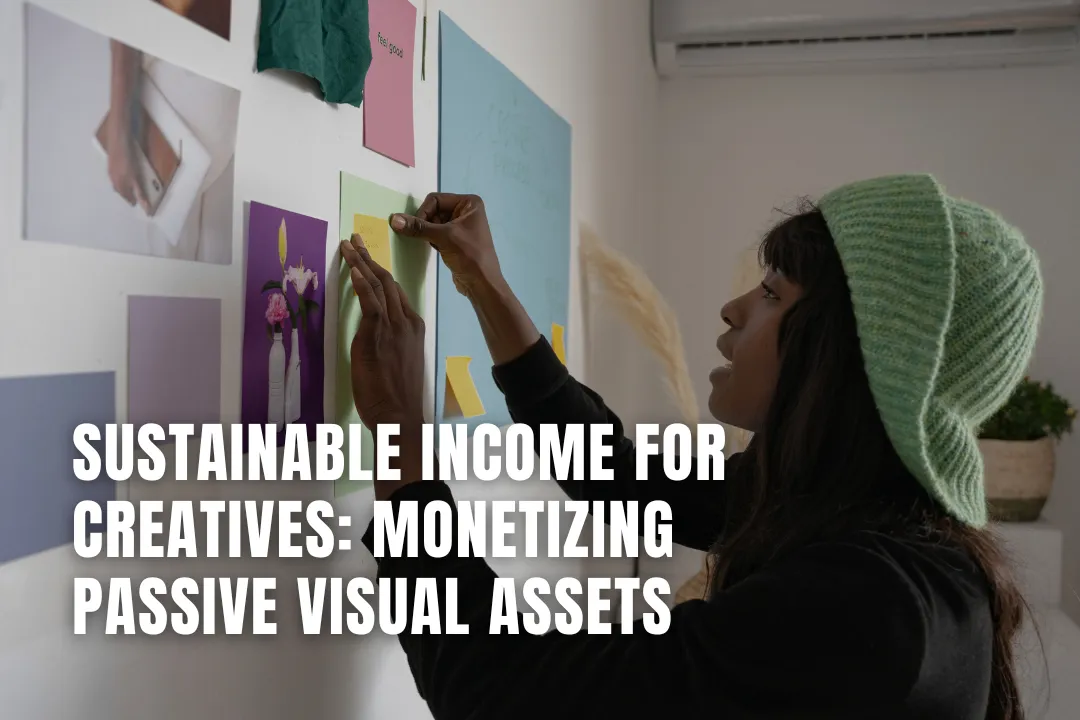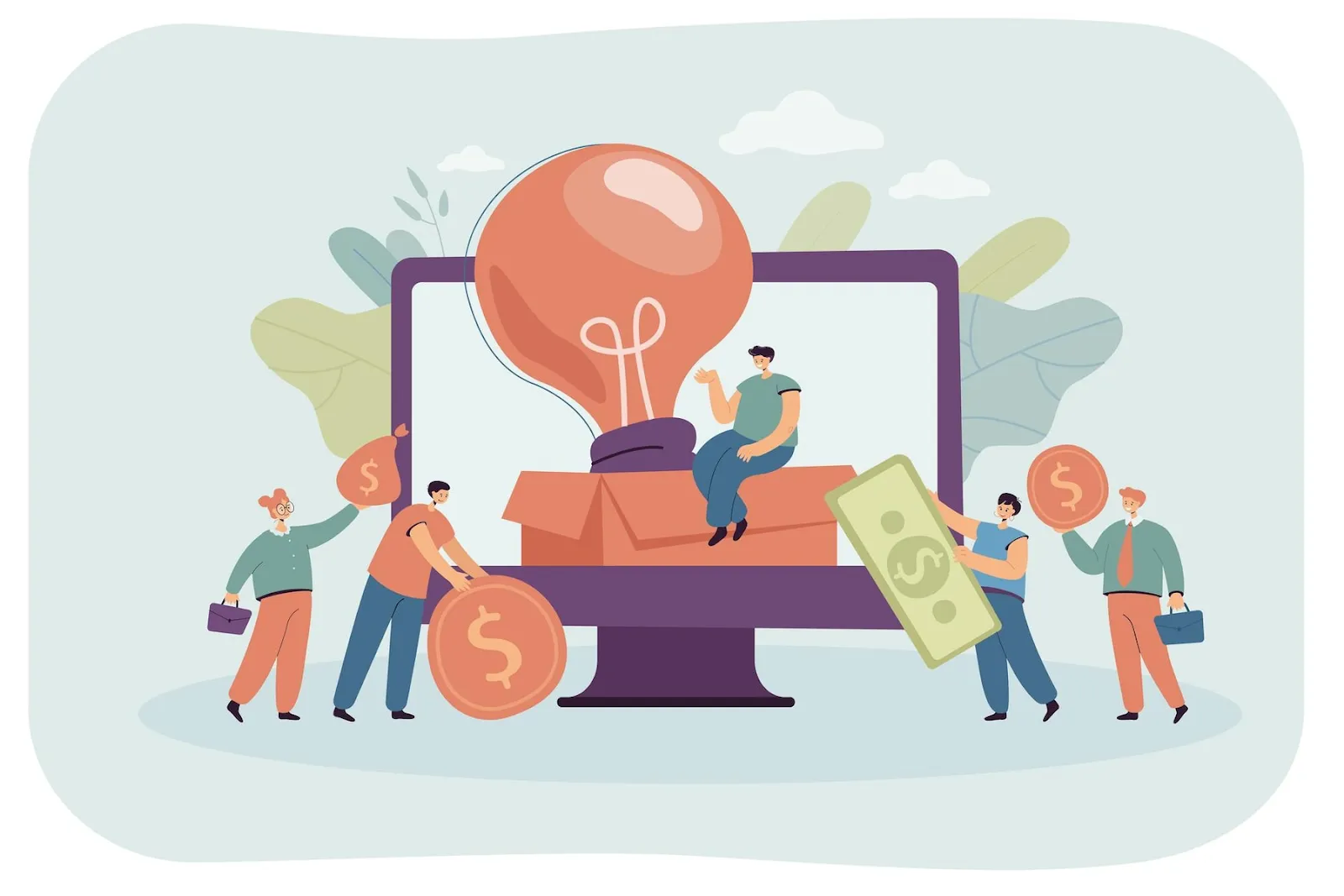
Passive income sounds like a dream. But it takes real work to get there. For visual creatives, the goal is to stop trading time for money and start building assets that sell while you sleep. Stock photos, design templates, and visual presets can all earn money long after they’re made. Each one carries potential. But none of it happens by accident.
Every asset needs a home, a buyer, and a reason to stand out. Success comes from structure, not luck. If you’ve got folders full of unused work, you’re sitting on something valuable. With the right system, those files can start working for you.

Passive income starts with what you already have. Creatives often sit on years of work. Photos, illustrations, templates, and icons that never made it past a client draft or personal project often sit unused. These files can turn into income if you choose the right ones.
Start by reviewing your folders. Look for patterns in your style, format, or subject matter. Do you tend to create minimalist icons or bright, colorful presets? Are your images sharp, clean, and well-composed? Group similar work together. Platforms reward consistency. Buyers trust cohesive styles. Once everything is sorted and labeled, you’ll see which assets are ready to sell and which ones need adjustments.
Where you sell matters as much as what you sell. Each platform attracts a different type of buyer and offers different levels of visibility, pricing control, and licensing terms. Before uploading anything, take time to research where your work belongs.
Large marketplaces like Adobe Stock or Shutterstock focus on volume and broad appeal. These are ideal for polished, technically sound assets. If your visuals lean toward branding elements or digital products, platforms like Creative Market or Gumroad may offer a better fit.
Some creatives even build their storefronts with help from website design experts to showcase their work in a more curated and branded environment. This gives you more control over pricing, presentation, and customer experience.
Check for commission rates, exclusivity rules, and usage rights. Selling on multiple sites can help, but too many platforms at once can dilute your effort. Start small, refine your listings, and scale intentionally.
How you present your assets can make the difference between one-time sales and steady income. Buyers want value, clarity, and ease of use. This starts with thoughtful packaging and clear pricing.
Group related items into bundles. A set of five icons, ten Lightroom presets, or a themed photo pack often sells better than single items. Bundles feel more complete and give buyers more reasons to click. Add clear descriptions, preview images, and usage ideas to help people see the benefit at a glance.
Pricing needs balance. Too low, and your work may seem less valuable. Too high, and you risk pushing away potential buyers. Look at what others charge in your niche. Offer standard licenses, with optional upgrades for commercial or extended use.
Seasonal promotions or limited-time discounts can help boost visibility without lowering your perceived value. Effective pricing strategies build trust. Trust brings customers back.

Creating great assets isn’t enough if no one can find them. Discoverability turns passive content into passive income. Every title, tag, and description plays a role in helping people find your work.
Start with strong keywords. Think like your buyer. Use specific, accurate terms that describe what the asset is, how it’s used, and what problem it solves. Avoid vague or trendy phrases that don’t match search intent. Titles should be simple and clear. Tags should reflect format, style, and theme. Don’t overstuff them. Focus on relevance.
Beyond platforms, use your channels to drive traffic. Share examples on social media. Create blog posts showing how your assets work in real projects. If you have a personal site, make sure it’s searchable. Add alt text to images and write meaningful descriptions. Every detail counts. The easier it is to find your work, the more likely it is to sell.
Licensing defines how your assets can be used. It also shapes how much you earn over time. A clear, fair license protects your work and gives buyers confidence in what they’re purchasing.
Most platforms offer two main types: royalty-free and rights-managed. Royalty-free licenses are more common. They allow repeated use with fewer restrictions, making them attractive for buyers who want flexibility. Rights-managed licenses are more specific. These often command higher fees but limit how and where the asset can be used.
Some creatives set up their own terms, offering standard, extended, and commercial licenses. Others explore recurring models like subscriptions or membership sites. These provide predictable income and reward loyal buyers. Long-term income relies on more than volume. It depends on how well your work is positioned, protected, and priced. The right license supports your brand and builds trust with every download.
Once your first assets start selling, build on that momentum. The fastest way to grow income is by expanding your library and offering variety within a clear creative focus.
Start by repurposing what you already have. Turn a photo series into a themed pack. Adapt design templates into different formats or sizes. If you work across tools like Photoshop, Canva, or Figma, create versions for each platform. This adds value without doubling your workload.
Diversify within your niche. Add new asset types like mockups, fonts, or video elements that match your existing style. Collaborate with other creatives to produce joint bundles or crossover products. Every new item gives buyers more ways to engage with your work. A larger, well-organized portfolio opens the door to repeat customers and steady sales. Small additions, made consistently, can compound into lasting income.
Sustainable income doesn't come from waiting. It comes from turning finished work into lasting value. For visual creatives, passive assets are more than leftovers. They can become a foundation. Build with intent. Sell with purpose. The tools are accessible. The demand is real. What starts as a side project can grow into a steady income stream. Make every upload count. Your work deserves to earn long after it's made.